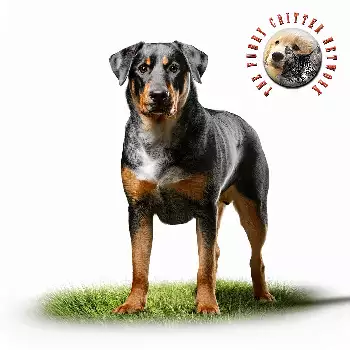The Beauceron is an ancient French breed with origins dating back several centuries in the plains region of Beauce, located in the northern part of central France near Paris. Historical evidence and written records suggest that dogs of the Beauceron type have existed since at least the Renaissance period, with references to large French herding dogs appearing in manuscripts and agricultural texts from the 16th century. These early dogs were developed by French farmers and shepherds who needed versatile working animals capable of herding large flocks of sheep and cattle across the flat, open plains while also protecting livestock from predators and thieves.
The breed's development occurred organically over centuries as rural communities selectively bred dogs that excelled at the demanding work required on French farms. These dogs needed to be intelligent enough to work independently when herding livestock across vast distances, strong and courageous enough to defend flocks from wolves and other threats, and biddable enough to work closely with shepherds when precise control was necessary. The harsh conditions of rural agricultural life naturally selected for hardy, healthy dogs with sound structure and the stamina to work from dawn to dusk in all weather conditions.
The Beauceron and the long-coated Briard were originally considered variations of the same breed, known collectively as Berger Français or French Shepherd. This changed in 1863 when Pierre Mégnin, a noted French veterinarian and cynologist, attended a dog show in Paris and observed both long-coated and short-coated French shepherd dogs. Mégnin recognized that these represented two distinct types and began advocating for their separation into distinct breeds. In 1893, during a meeting at the first national dog show in France, Mégnin formally proposed distinguishing the short-coated dogs as Berger de Beauce (Beauceron) and the long-coated dogs as Berger de Brie (Briard), named after their primary regions of development.
The Club des Amis du Beauceron was established in 1922 to preserve and promote the breed, becoming one of the oldest breed clubs in France. The club's founders were dedicated to maintaining the Beauceron's working abilities and traditional appearance while establishing formal breed standards. The first official breed standard was written in 1922 and has been refined several times since, most notably in 1968 and 2001, to reflect evolving understanding of canine health and structure while preserving the breed's essential characteristics. The standard has always emphasized working ability alongside physical conformation, ensuring that show dogs remain capable of performing their traditional tasks.
During both World Wars, Beaucerons served with distinction in the French military, working as messenger dogs, supply carriers, mine detection dogs, and sentries. Their intelligence, trainability, and courage made them valuable military assets, and many dogs served heroically under challenging battlefield conditions. This military service enhanced the breed's reputation and demonstrated its versatility beyond pastoral work. After the wars, returning soldiers and veterans helped popularize the breed among civilian populations, though it remained relatively uncommon outside rural areas.
The Beauceron remained primarily a working dog in France throughout most of the 20th century, with relatively small breeding populations focused on maintaining herding and protection abilities. The breed began to gain international attention in the 1960s and 1970s as dog enthusiasts outside France discovered its remarkable abilities and striking appearance. The first Beaucerons were imported to North America in the 1970s, though serious breeding programs did not begin until the 1980s and 1990s.
The American Beauceron Club was founded in 1980 by a small group of dedicated fanciers committed to establishing the breed in the United States while maintaining its working heritage. The United Kennel Club recognized the Beauceron in 1994, making it the first major American registry to accept the breed. The American Kennel Club granted full recognition in 2007, admitting the breed to the Herding Group after a period of Foundation Stock Service recording. Since AKC recognition, the breed has slowly grown in popularity in North America, though it remains relatively rare with fewer than 500 new AKC registrations annually.
Today, the Beauceron continues to work as a herding dog in France and other European countries, though many modern Beaucerons serve in police and military roles, as service dogs for people with disabilities, in search and rescue operations, and as family companions and sport dogs. The breed excels in competitive dog sports including obedience, French Ring Sport, agility, tracking, and herding trials. Despite its expanding roles, breed clubs and dedicated breeders work to ensure that every Beauceron retains the intelligence, trainability, physical soundness, and working drive that characterized the original shepherds' dogs of the Beauce plains, maintaining an unbroken connection to centuries of pastoral heritage.

